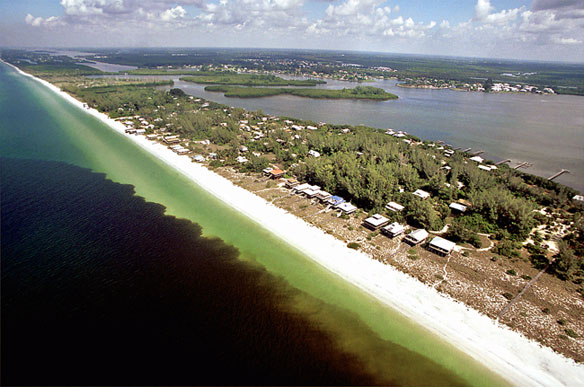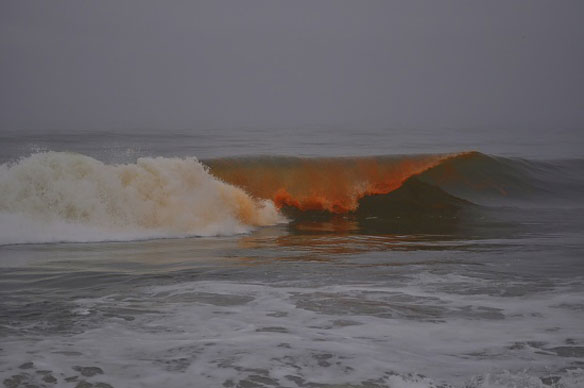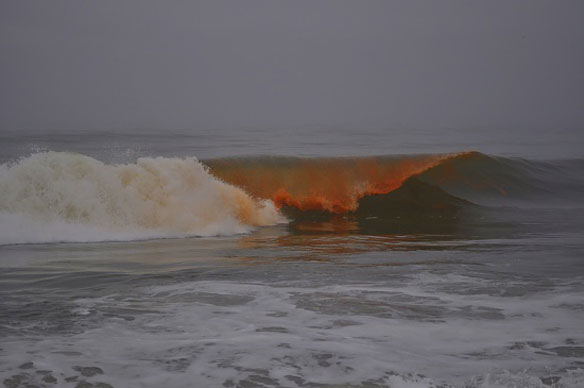By Karin Zeitvogel, AFP
Global warming could spur the growth of toxic algae and bacteria in the world’s seas and lakes, with an impact that could be felt in 10 years, US scientists said Saturday.
Studies have shown that shifts brought about by climate change make ocean and freshwater environments more susceptible to toxic algae blooms and allow harmful microbes and bacteria to proliferate, according to researchers from the National Oceanic and Atmospheric Administration (NOAA).
In one study, NOAA scientists modeled future ocean and weather patterns to predict the effect on blooms of Alexandrium catenella, or the toxic “red tide,” which can accumulate in shellfish and cause severe symptoms, including paralysis, in humans who eat the contaminated seafood.
“Our projections indicate that by the end of the 21st century, blooms may begin up to two months earlier in the year and persist for one month later compared to the present-day time period of July to October,” said Stephanie Moore, one of the scientists who worked on the study.
But the impact could be felt well before the end of this century, as early as 2040, she said at the annual meeting of the American Association for the Advancement of Science.
“Changes in the harmful algal bloom season appear to be imminent. We expect a significant increase in Puget Sound (off the coast of Washington state where the study was conducted) and similar at-risk environments within 30 years, possibly by the next decade,” said Moore.
In another study, NOAA scientists found that desert dust, which contains iron, deposited into the ocean from the atmosphere could lead to increases of harmful bacteria in the seawater.
Researchers from the University of Georgia found that adding desert dust to seawater significantly stimulated the growth of Vibrios, a group of ocean bacteria that can cause gastroenteritis and infectious diseases in humans.
“Within 24 hours of mixing weathered desert dust from Morocco with seawater samples, we saw a huge growth in Vibrios, including one strain that could cause eye, ear and open wound infections, and another strain that could cause cholera,” said Erin Lipp, who worked on the study.
The amount of iron-containing dust deposited in the sea has increased over the last 30 years and is expected to continue to rise, based on precipitation trends in western Africa that are causing desertification.
Rising precipitation in some parts of the world and lack of rain in other parts has been blamed on climate change by some experts.
Global warming has also been blamed for rising ocean temperatures, and “a warming ocean, which we know is happening, increases the likelihood of disease that affects both wildlife and humans,” NOAA administrator Janet Lubchenco told AFP.
Unhealthy oceans impact not only human and animal health but also affect countries’ economies, said Lubchenco, noting that US coastal states are home to eight in 10 Americans and generated 83 percent of US GDP in 2007.

The Florida “red tide” occurs almost annually along portions of the state’s Gulf Coast, causing beach and shellfish closures and negatively impacting Florida’s tourism industry. Just one harmful algal bloom event can impose millions of dollars in losses upon local coastal communities. Image courtesy of P. Schmidt, Charlotte / NOAA
Red Tide in New York Harbor, in Coastal Care










